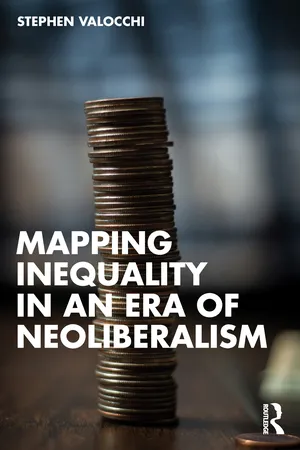
- 282 pages
- English
- ePUB (mobile friendly)
- Available on iOS & Android
Mapping Inequality in an Era of Neoliberalism
About this book
Offering a unique, comprehensive, and critical introduction to increasingly visible social inequalities, this textbook examines the political and economic causes and cultural consequences of a stratifying system that allocates material resources and human dignity on the basis of private profit and labor exploitation.
Mapping Inequality in an Era of Neoliberalism foregrounds capitalism as the major source of the power relations in the United States, as a class system that serves the dominant vector of inequality and sets the parameters of social mobility. The book starts with racialized capitalist power and shows how this power is constituted in structures of opportunity and constraint. It also uses ethnographic accounts to "flip the script" to show how individuals in the class structure construct identities.
Providing students with tools for understanding, Valocchi engagingly introduces many of the crucial concepts in this area of sociology – power, opportunity structures, ideology, social and cultural capitals, and intersectional class identities – connecting them as part of a uniquely critical approach.
Frequently asked questions
- Essential is ideal for learners and professionals who enjoy exploring a wide range of subjects. Access the Essential Library with 800,000+ trusted titles and best-sellers across business, personal growth, and the humanities. Includes unlimited reading time and Standard Read Aloud voice.
- Complete: Perfect for advanced learners and researchers needing full, unrestricted access. Unlock 1.4M+ books across hundreds of subjects, including academic and specialized titles. The Complete Plan also includes advanced features like Premium Read Aloud and Research Assistant.
Please note we cannot support devices running on iOS 13 and Android 7 or earlier. Learn more about using the app.
Information
Table of contents
- Cover
- Half Title
- Title Page
- Copyright Page
- Table of Contents
- PART I Power, Power: Who Has the Power?
- PART II From Power to People: The Interpretive Approach to Inequality
- Index